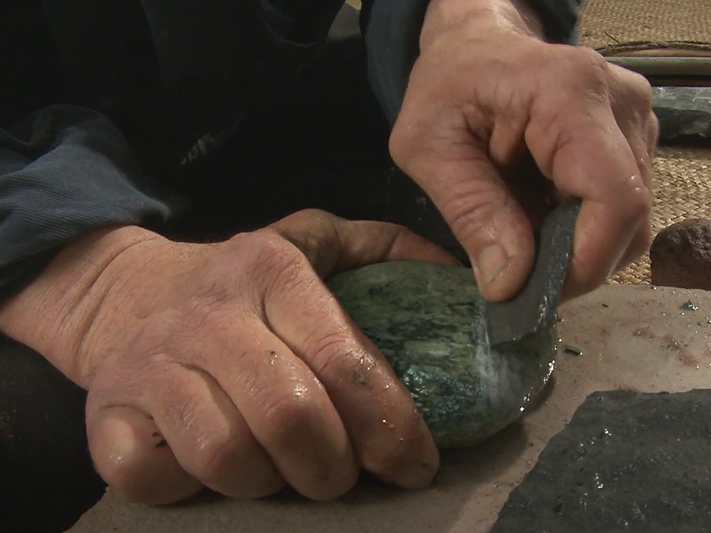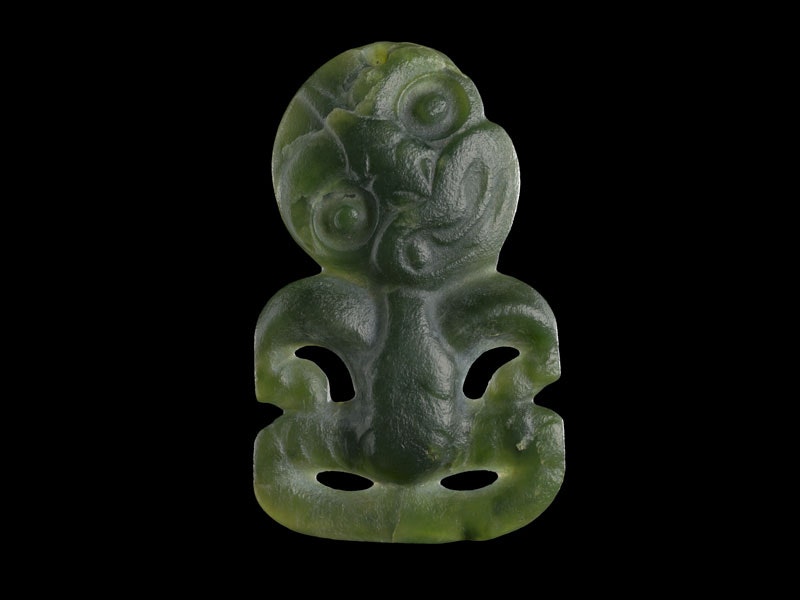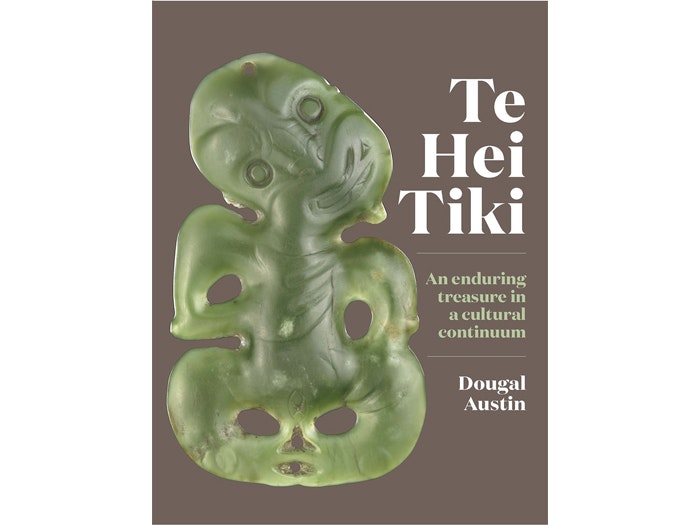
Watch: Shaping pounamu
Dante Bonica, an expert in stone tools, demonstrates the shaping and polishing of pounamu.
Free museum entry for New Zealanders and people living in New Zealand
Open every day 10am-6pm
(except Christmas Day)
Free museum entry for New Zealanders and people living in New Zealand
Māori greatly valued stone adzes – particularly ones made from strong, durable pounamu. These tools were used to fell mighty trees and to make large and elaborately carved canoes, storehouses, and meeting houses.
Māori greatly valued stone adzes – particularly ones made from strong, durable pounamu. These tools were used to fell mighty trees and to make large and elaborately carved canoes, storehouses, and meeting houses.
Pounamu is a remarkably tough material. Its great strength comes from the mineral tremolite. In nephrite rock, this mineral has a tightly interwoven crystal structure.
Pounamu’s ability to hold a sharp edge means that it can be shaped into superior cutting tools. Early pounamu tools included adzes and chisels.
Toki (adze blade), 1500–1820, iwi unknown, pounamu (nephrite), inanga variety, Arahura, Westland. Bequest of K A Webster, 1971. Te Papa (WE000160)
With these, Māori developed an advanced carving tradition, often recording the ancestral stories and journeys in wood.
After European contact, Māori adopted metal tools. However, pounamu tools continue to be almost as efficient to use as those made from metal, and today there is renewed interest in making and using them.
Adzes and chisels made from pounamu were shaped for different types of work.
A wide flat blade was ideal for cutting planks from trees, and also for the initial sculpting phase of woodcarving. Small flat chisels were used for detailed wood carving. Gouge chisels could be used to create intricate surface patterns.
But after years of use and resharpening, pounamu tools would become short and out of proportion. They would then be recycled. Old blades were often sawn lengthwise to make smaller tools like chisels, or carved into hei tiki (pendants in human form).
Dante Bonica demonstrate the effectiveness of pounamu as a tool.

Dante Bonica, an expert in stone tools, demonstrates the shaping and polishing of pounamu.


Of all Māori personal adornments, the human figure pendants known as hei tiki are the most famous, highly prized and culturally iconic. This book celebrates the long history of hei tiki and the enduring cultural potency of these taonga.